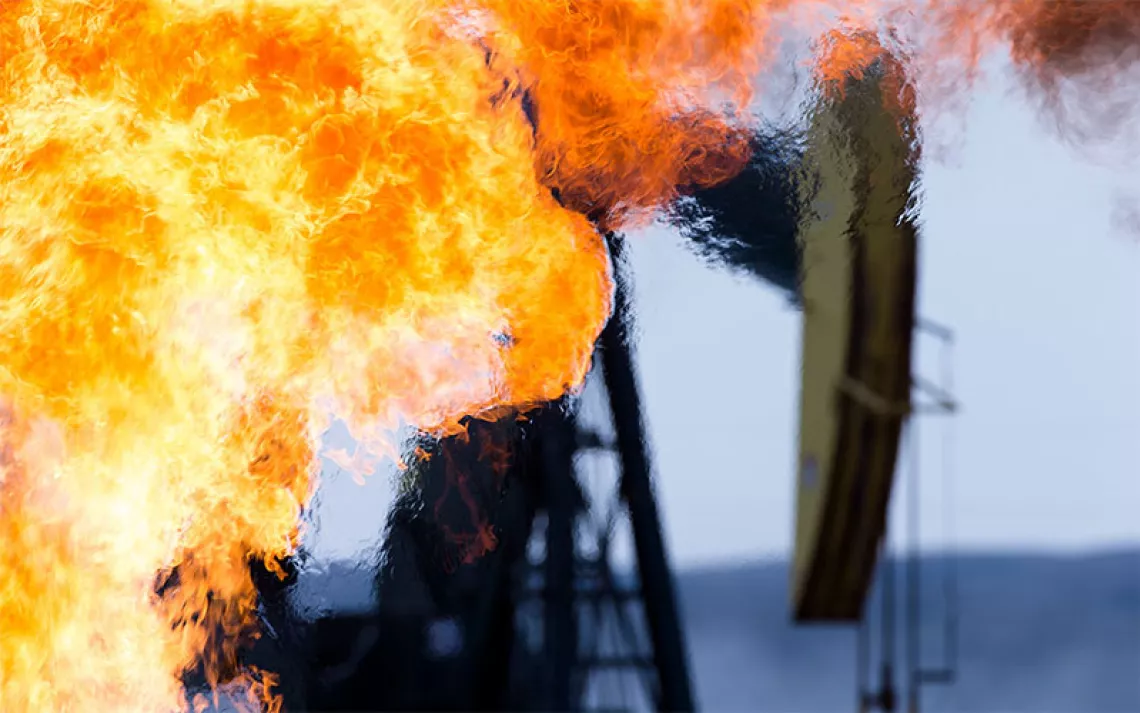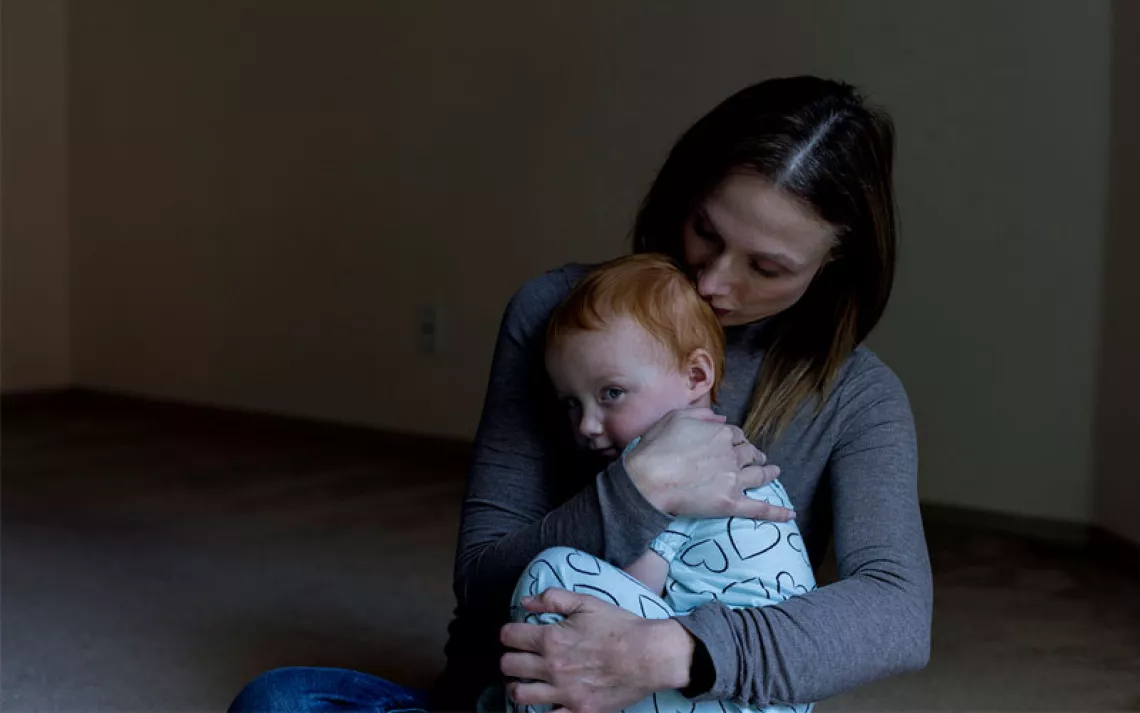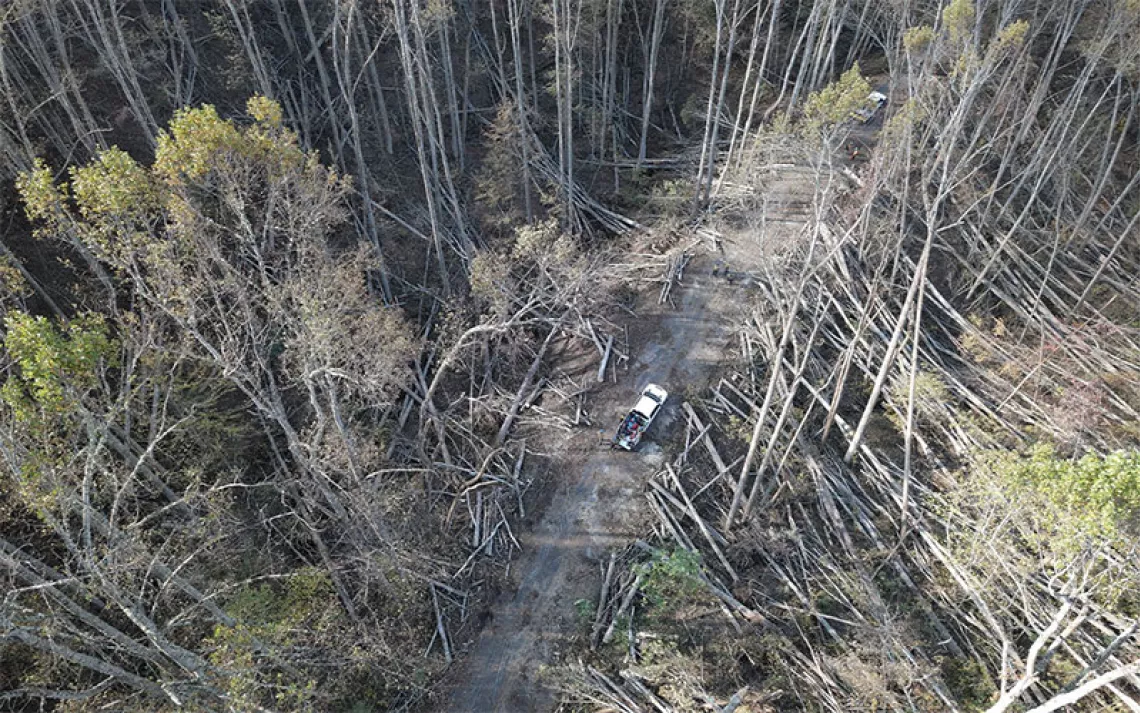COP27 a "Make or Break Moment" for Loss and Damage Finance
Here's a primer on what "loss and damage" is all about

A sign for help is seen amid the destruction left from Typhoon Haiyan in the coastal town of Tanawan, central Philippines. | Photo by AP Photo/Wally Santana, File
This story was originally published by The Energy Mix and is republished here as part of Covering Climate Now, a global journalism collaboration strengthening coverage of the climate crisis.
As COP27 opens in Sharm el-Sheikh, Egypt, developing countries and climate justice leaders are urging a notoriously reluctant developed world to get serious about financing for loss and damage, with the immediate and long-term well-being of hundreds of millions hanging in the balance.
“If COP cannot deliver on its promise,” said Barbados prime minister Mia Amor Mottley, in the preface to a new report from the Loss and Damage Collaboration (L&DC), “40% of the world’s population and more will wonder what the point of it is.”
The World Resources Institute, Oxfam, and the Stockholm Environment Institute have all been urging the developed world to address loss and damage at COP27, with detailed insights into why and how. But there are already two colliding narratives on whether a first-ever agreement to include loss and damage in this year’s COP agenda is a gain or a setback.
“After 48 hours of intense talks, Egypt’s foreign minister Sameh Shoukry said negotiators concluded with a compromise; the discussion would focus on ‘cooperation and facilitation’ not ‘liability or compensation,’” Bloomberg Green reports. “Inclusion of this agenda reflects a sense of solidarity and empathy with the suffering of the victims,” Shoukry declared as he assumed the official role of COP27 president.
But this morning’s edition of ECO, the daily COP newsletter produced by Climate Action Network–International, declares action on loss and damage—not just an agenda discussion—as the standard for success against which this year’s conference will be judged.
“A strong and fair decision on Loss and Damage finance is nothing less than a litmus test for international climate negotiations,” ECO writes. “Yes, funding arrangements for Loss and Damage are now on the agenda, but the risk is real that we end up with an empty shell once again. The parameters adopted yesterday do not meet the demands of developing countries or the needs of the most vulnerable.”
The evolution of "loss and damage"
The term “loss and damage” covers measurable economic losses like storm-damaged infrastructure as well as immeasurable ones, like the erasure of cultural identity and lost biodiversity. It first entered the climate justice lexicon back in 1992, during negotiations leading to the original United Nations Framework Convention on Climate Change (UNFCCC), when the Alliance of Small Island States (AOSIS) submitted a proposal for a financial mechanism to address loss and damage from sea level rise. AOSIS’s demand that the developed world take responsibility for climate impacts—which had already occurred, or were baked in, too late for the lifeboats of mitigation or adaptation—stands as the first attempt to force wealthier nations to “address,” meaning, pay for, loss and damage.
But the AOSIS proposal went nowhere. And thanks to a concerted program of distraction and delay by the developed world, it wasn’t until 18 years later, at COP16 in 2010, that the UNFCCC decided to formally “assess and address climate-related loss and damage.” Three years later, COP19 saw the establishment of the Warsaw International Mechanism for Loss and Damage (WIM), with a mandate to “promote the implementation of approaches to address loss and damage associated with the adverse effects of climate change.” And then, at COP21 in 2015, another apparent breakthrough: Loss and Damage—the capitals denoting plans and policies to help developing countries weather the effects of climate change—would be included in a dedicated article in the Paris Agreement, establishing it as the formal “third pillar” of UNFCCC climate policy, separate from mitigation and adaptation. But the text of the Paris Agreement itself, and later the framing and mandate of the “Santiago Network on Averting, Minimizing, and Addressing Loss & Damage” at COP25 in 2019, and finally the newly minted Glasgow Dialogue established at COP26, offered the developed world the options of “averting, minimizing, and addressing loss and damage”—rather than simply addressing the problem with real financing.
An increasing number of countries now support the idea of averting loss and damage through mitigation and minimizing losses through climate change adaptation.
But with the recent exceptions of Scotland, the Wallonia region of Belgium, and Denmark, no wealthy country has stepped up to help foot the bill for climate impacts. In many cases, wealthy countries continue to actively block progress.
The "moral obligation" to act
Germany and the Vulnerable 20 (V20) negotiating bloc announced plans last month to launch an insurance-based Global Shield Initiative at this year’s COP. “We must acknowledge that there is climate-related loss and damage, and that the most vulnerable countries, in particular, need our solidarity in dealing with it,” Germany’s economic cooperation minister, Svenja Schulze, said in a joint release.
But climate justice campaigners are skeptical, writes Climate Change News. They fear the Shield is just another rich-world distraction designed to stall the establishment of a dedicated loss and damage finance facility that low- and middle-income countries have long been fighting for. Roseline Isata Mansaray, founder of Fridays for Future Sierra Leone, told Climate Change News that only the rich and the middle class can afford insurance in her country. For the poor, the Shield will likely mean choosing between having insurance or having bread.
The L&DC also warns that insurance schemes will prove a poor fit for slow-onset climate impacts like sea level rise.
“Blockers of Loss and Damage finance often point to existing mechanisms such as insurance and humanitarian aid as addressing the challenges, but these are not sufficient in scale or in scope,” writes the L&DC. “Since 2017, donor nations have met only 54% on average of the amounts needed in extreme-weather-related appeals, leaving a shortfall estimated at between US$28 and $33 billion.”
And even if there were not a shortfall, humanitarian aid focuses on immediate needs, not medium- or long-term ones, much less climate impacts that are slow-onset events like the erosion of a country’s fisheries due to ocean warming.
Staggering losses, staggering profits
The analysis leading into COP27 paints a striking contrast between the impacts faced by the world’s most vulnerable countries and the benefits enjoyed by one of its wealthiest industries. In the first six months of 2022, the L&DC reports, 119 climate- and weather-related events in developing countries generated $26.2 billion in economic losses. Over that same time span, just six colossal fossils made $95 billion in profits.
Overall, “for every $1 billion drained from V20 economies due to climate-induced loss and damage since 2000, fossil fuel companies have made profits of almost $60 billion,” L&DC adds. And yet governments continue to subsidize them. “Global fossil fuel subsidies from 2021 alone reached $697 billion,” writes Madeleine Diouf Sarr, head of Senegal’s climate change division. She’s the chair of the Least Developed Countries Group on Climate Change, representing 46 nations that are home to nearly 1 billion people and collectively contributed just 1.1 percent of global emissions in 2019.
“That could pay for the climate-related economic losses suffered by the most vulnerable countries from 2000 to 2019 and still have US$170 billion in profits left over,” she added.
Loss and damage on the (permanent) agenda
Recently, “the tenor around the discussion [of loss and damage] is starting to change,” writes Time magazine, with the United States ready to talk about “potential financial arrangements” on loss and damage at COP27. “We have to find a way for more capital to flow into developing countries,” US climate envoy John Kerry told the magazine last month. He described the current allocation system as inefficient and unfair, adding that the developed world has a moral obligation to “stand up and be honest about that and help.”
And yet, the issue of “addressing loss and damage” remains, as it has always been, on the COP’s provisional agenda—meaning the time and space even to open the discussion has to be renegotiated at each conference. The L&DC says this deliberate subordination means discussions on loss and damage have “largely played out in side events to the main COP itself, away from where the political negotiations take place and decisions are made.”
L&DC is one of many climate justice voices urging that “Loss and Damage” be put on the permanent COP agenda: “Without adequate space to have these important discussions, no true progress can ever be made.”
“Encouragingly,” writes the World Resources Institute, “Frans Timmermans, the European Union’s leading climate negotiator, has already signaled support for a “formal space on the agenda to discuss this challenge.”
But even that advance came at a cost. “Developed countries: everyone saw your old tactics in the meeting rooms in the final 36 hours before the beginning of COP27, trying to weaken the final decision and delay (again) action on providing meaningful loss and damage finance,” ECO writes. Delegates “also took note of your relentless efforts to exclude liability and compensation from the agenda item. That too is quite familiar.”
So “ECO will not be celebrating an agenda item, as it represents only an incremental step in the right direction. We are still demanding a truly ambitious decision for frontline communities that meets the requirements of climate justice and equity. Postponing such a decision once again would be an insult to the people and communities who are already suffering the worst climate impacts, even though they are not responsible for them.”
A make-or-break moment
ECO is by no means the only voice casting COP27 as a make-or-break moment for loss and damage.
“As one of the few people who has attended every single COP over the last three decades, I have personally witnessed the resistance from the developed countries to every attempt by the vulnerable developing countries to discuss loss and damage from human-induced climate change,” said Saleemhul Huq, director of the International Centre for Climate Change & Development in Dhaka, Bangladesh.
At last year’s COP, he added, developing countries demanded the creation of a Finance Facility for Loss and Damage, but the idea was “knocked down at the last minute” by developed countries that only agreed to further dialogue.
“They were prepared to talk about it for three years without providing a dime to the victims of climate change in the developing countries,” Huq said. But this year, if there’s no real progress on finance for loss and damage, “the UNFCCC will have failed in its responsibilities.”
 The Magazine of The Sierra Club
The Magazine of The Sierra Club



